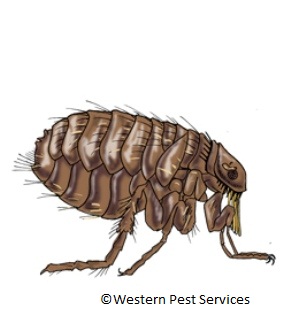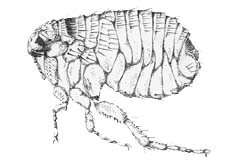Interactions

The Cat flea (Ctenocephalides felis) is considered an ectoparasite, meaning that it is a parastitic animal that lives on the outside of its host rather than on its inside. (Biology Online 2005) It will generally take on cats as its host but dogs and many other animals have also been found to be parasitized by them. They generally will reside and feed on a single host but animal to animal transfer can occur when they interact with each other, however animal to human transfer is quite uncommon. Cat fleas have been known to bite humans, which does cause an itchy immune system response due to released chemicals by the flea, but this is relatively not harmful unless an allergic reaction occurs. (Purdue University 2008)
Cat fleas have also been found to carry tapeworms, such as the double pore dog tapeworm, Dipylidium caninum. This tapeworm is typically a parasite that infects dogs and cats but children can also be infected if they ingest a cat flea which contains an immature stage of the tapeworm. This tapeworm does not cause any serious disease but you should consult your physician if you suspect that infection may have occurred. (Purdue University 2008)
One significant predator to the cat flea is ants who will prey upon all of its life stages except the cocoon stage. Other reported predators have included Histerid, Staphylinid, and Tenebrionid beetles, and the nematode Steinemema carpocapsae. In fact, this nematode can actually be purchased to be used for outdoor applications to turf and has been shown to be effective. (Rust and Dryden 1997)
